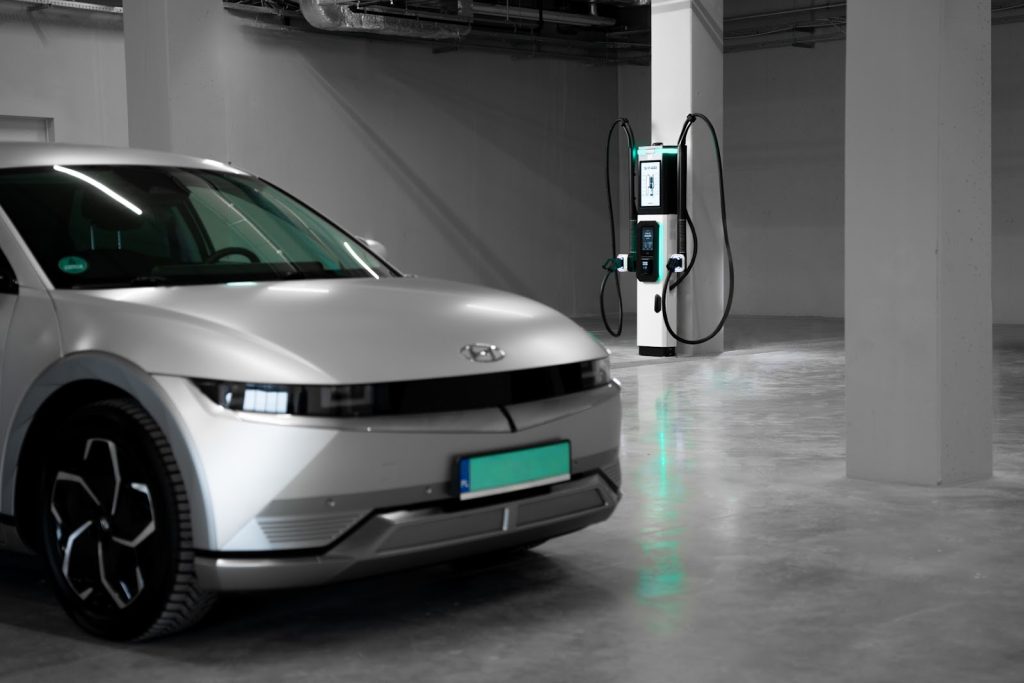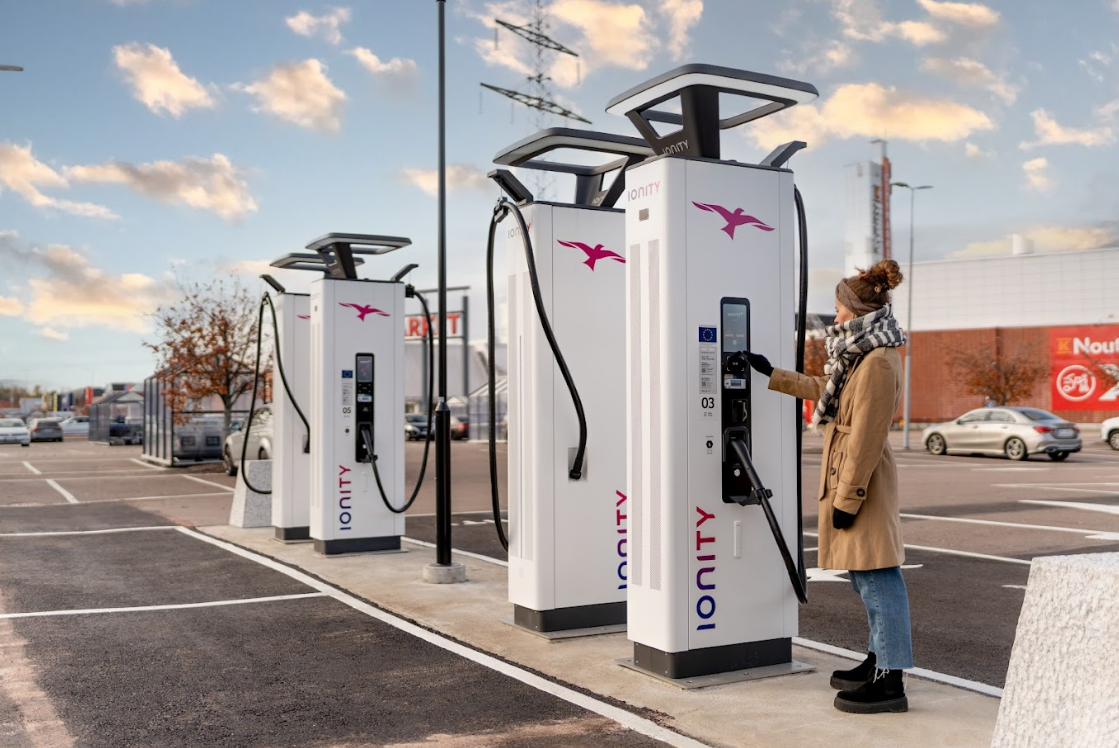The soaring popularity of electric vehicles brings a pressing question about our electrical infrastructure's capacity. With forecasts predicting about 75 million additional EVs on European roads by 2030, the capability of the electricity grid has moved from an abstract concern to an immediate challenge requiring innovative solutions and strategic planning.
The simple answer to whether our power grid can handle the additional demand is: Yes – but the journey demands transformation. While today's grid infrastructure can handle the current wave of EV adoption, ensuring long-term success requires modernization, smart management systems, and technologies that turn challenges into opportunities.
How EV Charging Affects the Power Grid
The relationship between EVs and the power grid extends far beyond simple electricity consumption. Consider this: when you charge your EV, you're not just drawing power from an EV charging station – you're participating in a complex dance of energy distribution that impacts entire neighborhoods.
Peak Hours
Evening charging creates the perfect storm for power demand. Just as families return home and power up their appliances, EV owners plug in their vehicles.
A single street with multiple charging EVs can quadruple the typical power draw, pushing aging infrastructure to its limits. While a typical household uses 2-3 kW during peak hours, adding an EV charger can spike this demand to 10-25 kW.
Local Infrastructure Impact
Neighborhood transformers face unprecedented challenges. These workhorses of power distribution, many installed decades ago, suddenly find themselves managing sustained high-power delivery they were never designed to handle.
The strain becomes particularly evident in areas with high EV adoption rates, where multiple households might be charging simultaneously.
Current Grid Capacity and Challenges
As electric car adoption accelerates, the European power grid faces several critical challenges. Our current infrastructure, designed decades ago, follows a simple one-way model: electricity flows from the power plant to consumers. Electric vehicles challenge this fundamental assumption, potentially acting as both power consumers and providers.
Current Grid Limitations:
- Many components are decades old
- Limited capacity for additional load
- Designed for one-way power flow only
- Minimal real-time monitoring capabilities
The numbers tell a sobering story. Between 2021 and 2022, the EU grid expanded by a mere 0.8%. Meanwhile, the yearly electricity demand continues to climb at 1.8% annually. This widening gap between infrastructure growth and power demand can't continue indefinitely.
Yet the challenge extends beyond simple capacity. Modern EVs represent potential grid assets – they are like mobile power banks that could help stabilize the network by sending power back to the grid.
Our aging infrastructure, however, wasn't designed for this kind of dynamic, two-way relationship (bidirectional charging). The traditional model of predictable, one-way power flow is becoming obsolete, replaced by a need for flexible, intelligent power distribution systems that can adapt to rapidly changing demand patterns.
This fundamental mismatch between twentieth-century infrastructure and twenty-first-century needs demands more than just incremental improvements. It requires a complete rethinking of how we manage and distribute electrical power.
Solutions to Help the Grid Sustain the Electric Car Surge

The challenges facing our power grid due to the rising number of EVs and the growing demand for electricity aren't insurmountable. In fact, electric vehicles themselves might be a part of the solution. Smart charging technology represents the first line of defense against grid overload. These systems analyze multiple factors – time of day, electricity demand, grid capacity, renewable energy availability – to determine optimal charging times.
Key Smart Grid Solutions:
- Advanced systems automatically distribute power among multiple charging stations to prevent grid overload and ensure optimal power delivery to all connected vehicles.
- The grid continuously monitors and responds to power demand in real time, adjusting delivery rates to maintain stability across the entire network.
- Smart pricing systems automatically adjust charging costs based on current grid capacity, encouraging users to charge during off-peak hours with lower rates.
- Vehicle-to-grid technology enables EVs to feed stored energy back into the grid during peak demand, effectively turning parked vehicles into a distributed power storage network.
Perhaps most exciting is the emergence of vehicle-to-grid (V2G) technology. Think of EVs as "batteries on wheels" – mobile power banks that could actually support grid stability. During peak demand, connected vehicles could feed power back into the grid, potentially reducing grid reinforcement costs by up to 10%. When demand drops, and renewable energy is abundant, these same vehicles recharge, creating a dynamic, flexible energy ecosystem.
Long-Term Outlook for the Power Grid
The future of our power grid depends on rapid modernization and digital transformation. Current expansion rates – less than 1% annually – simply won't suffice for the long term. Yet the outlook isn't as dire as some suggest. Grid operators are already implementing sophisticated management systems that treat EVs not as threats but as valuable grid assets.
Smart technology adoption is accelerating. Grid operators now receive real-time data about power consumption patterns, enabling more efficient distribution. Advanced algorithms predict demand spikes and adjust accordingly. These innovations don't just help the grid cope with EVs – they make it more resilient overall.
The integration of renewable energy adds another layer of complexity – and opportunity. Wind and solar power's intermittent nature requires more and bigger storage solutions. Enter electric vehicles: a distributed network of mobile batteries that could help balance these fluctuations. During sunny or windy periods, excess renewable energy charges vehicles. During still, cloudy periods, some of that stored energy returns to the grid.
Popular Myths About the Power Grid and EVs
As with any transformative technology, electric vehicles face their share of skepticism and misunderstandings. From fears of widespread blackouts to concerns about grid capacity, let's separate fact from fiction in the world of EV charging.
Myth #1: "EVs will cause widespread blackouts."
Reality: Smart charging and load management systems prevent simultaneous power draws. Most EVs charge during off-peak hours when grid capacity is abundant.
Myth #2: "The grid can't handle millions of new EVs."
Reality: While upgrades are indeed necessary, gradual adoption gives infrastructure time to adapt. Many regions have already successfully managed high EV penetration through intelligent charging systems.
Myth #3: "Every EV needs a high-power charger."
Reality: Most charging happens at home, overnight, using standard Level 2 chargers. Fast chargers, which do strain the grid more, primarily serve long-distance travelers.
Conclusion
Can the grid support electric cars? With proper investment and innovation, absolutely. The transition won't be without challenges, but solutions already exist. Smart charging technology, vehicle-to-grid systems, and grid modernization efforts are transforming our power infrastructure into a more resilient, flexible network.
The key lies in viewing EVs not as a burden on the grid but as an opportunity for transformation. These vehicles represent mobile energy storage units that could help balance renewable energy, stabilize the grid during peak demand, and enable a more sustainable energy future. Success requires continued investment in infrastructure, widespread adoption of smart charging technologies, and regulatory frameworks that encourage innovation.
The grid of tomorrow won't just support electric vehicles – it will be enhanced by them. This symbiotic relationship between EVs and power infrastructure points toward a more resilient, sustainable energy future. The technology already exists. The solutions are proven. Now, it's a matter of implementation and scale.
Ready to be part of the electric revolution? Connect with Ekoenergetyka's team to explore our charging solutions and help shape the future of sustainable energy.
